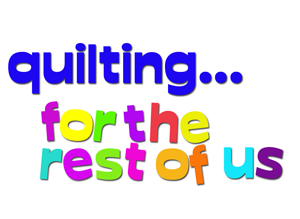 Hand Applique with Alex Anderson: Seven Projects for Hand Applique by Alex Anderson
Hand Applique with Alex Anderson: Seven Projects for Hand Applique by Alex AndersonMy rating: 3 of 5 stars
Note: I can't quite figure out how to do an accented letter in this format so please forgive that the word "applique" never appears with the accent over the "e" as would be proper. Just imagine that it's there.
See my other Alex Anderson book reviews for background information as to what I generally like about Alex Anderson books. In a nutshell: always well laid out, always very clear in instructions, approached with humility (IOW, she doesn't claim to know the only right way but rather presents what works for her). Now, to move on...
Hand Applique with Alex Anderson is a good way to introduce yourself to the techniques of hand applique. In her brief introduction, Alex states "There are several ways to approach applique, each with its own benefits," (p. 4), and this book will introduce you to a few of those methods. While not an exhaustive exploration, she does a good job at getting you started in the right direction. It seems that her purpose is to introduce you and get you hooked--then you can continue to build your skills through other resources or classes.
First, Hand Applique starts with a look at the necessary supplies: Fabric--with tips about what types of fabric will tend to work best in different situations; equipment (needles, thread, thimbles, scissors, pins); template materials (plastic, freezer paper, bias bars); and marking tools, plus reference to a few other "miscellaneous" supplies. With each of these, she gives a brief explanation of some considerations to keep in mind as you explore the possibilities open to you.
The general instructions cover fabric grain, pressing, pinning, sets, borders, and finishing. She doesn't spend a lot of time in any of these--I think her expectation is that you already have at least some quiltmaking experience before picking up this book so she can afford to skim through the basics and only highlight how they may be different in an applique situation. If you've never quilted before, you might need other resources to cover the basics first. But you don't need to have done a lot of quilting to be able to pick up where this book starts.
The section entitled "Basic Applique Preparation" discusses thread basting on paper; glue-stick basting on paper; drawn line for needle-turn applique; preparation for reverse applique; preparation for buttonhole stitch; arrangement of applique pieces; and preparation for the applique stitch. Mind you, this section is three pages long with a whole bunch of white space and very few images. She describes the method, beginning with particular situations in which it is useful. The descriptions are clear enough but a few images would have helped tremendously. I questioned whether I understood her descriptions so easily because this wasn't my first book on applique, and I've taken a class. So for me, reading her descriptions of the methods had more the feel of a refresher course. If I had never been exposed to it at all, it may not have been as clear. Hard to tell on that one. I'm always for a good picture to illustrate a method and her books typically excell on this point. This book fell a bit short.
The section on "The Applique Stitch" was superior to the previous section by far. With plenty of photos showing both left- and right-handed approaches, she outlines the basic applique stitch, outside curves, inside curves, V's or inside angles, points, circles, bias strips without bias bars and bias strips with bias bars, and a button-hole stitch. This was an excellent section--clear descriptions, good illustrations.
As in all her books, the bulk of the teaching is through projects. While I usually like Alex Anderson's project designs, the ones in this book didn't do a whole lot for me, although I can see their usefulness as teaching tools. And whether you like or dislike a pattern is such a personal thing--you may certainly completely disagree with me! The first project, "Color Sampler," is intended to teach a wide variety of applique situations--with flowers, stars, leaves, berries, and a curving stem, you'd be exposed to most of the basic applique shapes and considerations. "Autumn Leaves," "Cherries," "Hearts," "Rail Fence with Stars," and "Mittens" are each a practice opportunity for a single shape. "Rose Sampler" is also primarily a single set of shapes--rose, rosebud, leaf, vine--set in a variety of designs, so it looks less repetitive than the others.
I only gave this book three stars rather than my usual four for Alex Anderson books because of the lack of illustrations in the applique preparation portion and that some portions of the book are quite cursory. That being said, it's still quite useful and would be a good way to get your feet wet with applique.Hand Applique with Alex Anderson: Seven Projects for Hand Applique
View all my reviews
